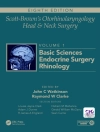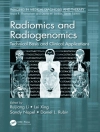Obstructive Sleep Apnea (OSA) is the most prevalent sleep disordered breathing disorder. It has become apparent that in more than half the patients with OSA, the frequency and duration of apneas are influenced by body position. To treat patients with Position Dependent OSA (POSA), positional therapy can be considered for preventing patients from sleeping in the worst sleeping position. Treatment of POSA has advanced dramatically recently with the introduction of a new generation of positional therapy.
Positional Therapy in Obstructive Sleep Apnea presents improved OSA diagnostic methods and the tools needed to implement positional therapy in clinical practice. This includes patient work-up, positional therapy with or without other treatments, consequences of guidelines and future developments.
Clinicians, students and researchers will find this comprehensive guide to be an invaluable resource for evaluating and treating sleep breathing disorders.
Содержание
1. Introduction.- 2. OSA, the magnitude of the problem 3.- Compliance of various forms of OSA treatment.- 4. Prevalence of positional obstructive sleep apnea in patients undergoing polysomnography and the effect of sleep stage.- 5 The contribution of head position to the apnea hypopnea index in patients with position dependent obstructive sleep apnea.- 6. Influence of sleep position on the transition of mild to moderate and severe OSA.- 7. Clinical characteristics of positional obstructive sleep apnea among Asians.- 8. Positional therapy: left lateral decubitus position versus right lateral decubitus position.- 9. Drug Induced Sleep Endoscopy and Sleep Position.- 10. Changes in site of obstruction in obstructive sleep apnea patients according to sleep position.- 11. Towards a clinical classification system (APOC) for positional dependent obstructive sleep apnea.- 12. Retrospective cohort analysis with the APOC system.- 13. Correlation between calculated/predicted and actual AHI after positional therapy.- 14. Influence of sleep position on snoring.- 15. The effect of body position on sleep apnea in children.- 16. Sleep position and pregnancy.- 17. Positional OSA in Down syndrome.- 18. Positional OSA in the morbidly obese and the effect of weight loss on OSA severity.- 19. The impact of body weight changes on body posture dominance in adult Obstructive Sleep Apnea Patients.- 20. Positional central sleep apnea.- 21. History of positional therapy: transition from tennis balls to new devices.- 22. Long term results and compliance of a special vest preventing the supine position.- 23. Results of a first generation new device for positional therapy.- 24. Short term (4 weeks) results of the Sleep Position Trainer for positional therapy.- 25. Long-term (6 months) effectiveness, compliance and subjective sleep outcomes of treatment with the Sleep Position Trainer in a large cohort of position-dependent OSApatients.- 26. 10 problems and solutions for Positional Therapy: Technical aspects of the Sleep Position Trainer.- 27. Prevalence and Effect of supine-dependent obstructive sleep apnea and effect of oral appliance therapy.- 28. Positional therapy and palatal surgery.- 29. Positional therapy and tongue base surgery.- 30. Residual POSA after maxillomandibular ad-vancement in patients with severe OSA.- 31. Impact of upper airway surgery on positional change during sleep.- 32. Comparison of positional therapy to CPAP in patients with positional obstructive sleep apnea .- 33. Position training: an indispensable therapy.- 34. Positional therapy, consequences for and implementation in OSA guidelines.- 35.- Position-dependent sleep apnea: implications for diagnosis and management.- 36. Positional Therapy in Obstructive Sleep Apnea: For whom and for whom not.- 37. Summary and future perspectives.
Об авторе
Nico de Vries, MD, Ph D, dept Otolaryngology, St Lucas Andreas Hospital, Jan Tooropstraat 164, 1061AE Amsterdam, the Netherlands
Madeline Ravesloot, Sint Lucas Andreas Ziekenhuis, Department of Otorhinolaryngology, Amsterdam, The Netherlands
J. Peter van Maanen, Sint Lucas Andreas Ziekenhuis, Department of Otolaryngology, Amsterdam, The Netherlands.












